Master Pool Chemistry: Keep Your Above-Ground Pool Crystal Clear
August 01th, 2024
August 01th, 2024
Sunlight spills over your backyard, the gentle ripple of blue inviting family and friends for a refreshing dip. There's something magical about the allure of a sparkling, well-maintained above-ground pool. However, achieving and maintaining that crystal-clear water requires more than a simple hose fill-up. At the heart of this upkeep lies the often overlooked but crucial practice of testing and balancing pool water chemistry.
Each pool owner has their own first-hand tales of the trials and errors in getting the water just right. My own journey began with a comedic episode involving a green-tinged pool and a guest appearance by a brave but ultimately disappointed neighborhood frog. It became evident that pool maintenance demands respect for the delicate science behind it. The careful balance of chemicals not only keeps the water clean but also ensures the longevity of the pool infrastructure and, more importantly, the health of those who enjoy it.
Understanding pool chemistry isn't reserved for chemists; it’s an accessible skill once armed with the right tools and knowledge. Testing kits become your best ally, offering insights into pH levels, chlorine content, and alkalinity, each playing a pivotal role in maintaining balance. By embracing this process, pool owners can not only avert the dreaded murky waters but also extend the lifespan of their beloved summer sanctuary. As you navigate this guide, discover the art and science of maintaining the perfect pool, ensuring every swim is a safe, enjoyable dive into pristine waters.
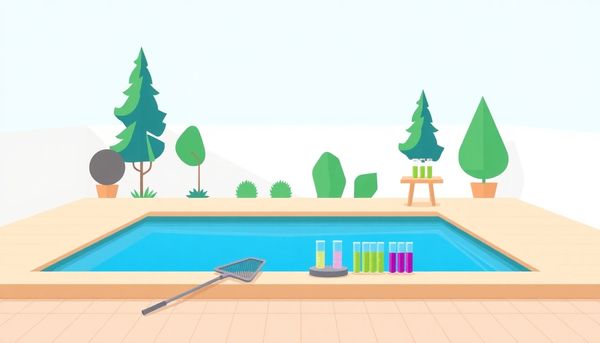
Navigating the world of above-ground pool chemicals might seem overwhelming, but it's crucial for crystal clear water and a healthy swimming environment. When I first set up my pool, I quickly learned that maintaining balanced water chemistry isn't a one-time task—it's a weekly commitment essential for preventing algae blooms, equipment damage, and those pesky skin irritations.
Start by addressing the most fluctuant elements: pH and chlorine. An unbalanced pH can wreak havoc on both the pool and its visitors. Aim for a serene balance between 7.4 and 7.6 to avoid corrosion or scale build-up. To adjust, don’t rush. Introduce chemicals slowly, allowing the pump to circulate them before retesting. This patience pays off, ensuring every swimmer enjoys a sting-free splash.
Chlorine, your pool’s primary defender against bacteria, should hover around 3 parts per million. But be mindful of the sun; it’s the chlorine’s natural nemesis. If you're using liquid chlorine, remember to shield it with cyanuric acid unless your pool basks in the shade.
Don't forget the supporting cast: alkalinity, maintaining the pH’s stability, should range between 80 and 120 ppm. Lastly, calcium hardness and metal sequestrants, while less of a weekly worry, still play vital roles in protecting your pool’s integrity from unseen threats.
Balancing these elements is like fine-tuning an orchestra—each component, when harmonized, creates the perfect aquatic symphony. So keep your kit handy, your eyes sharp, and your water inviting.
Testing and monitoring water levels in your above ground pool is akin to keeping a keen eye on your car’s fuel gauge. Just as you wouldn't embark on a road trip without checking your gas, you shouldn't rely on splash-filled weekends without ensuring your pool is in peak condition. Whether you’re seasoned in pool maintenance or a beginner, consistent testing is your ally against unseen issues.
Start by gathering your tools of choice. Test strips are a popular option, offering convenience and affordability. They swiftly measure essential elements such as pH, chlorine, and alkalinity. For those of us who prefer precision, a liquid test kit or digital reader might be the way to go. Remember, a clean water sample—collected at elbow depth—is crucial for accurate readings.
Now, let’s talk numbers. Weekly tests are your best bet, but increased usage, heavy rain, or recent chemical additions might necessitate more frequent checks. Each measurement, from cyanuric acid to calcium hardness, offers insights into your pool’s health. For example, maintaining a pH level of 7.4 to 7.6 ensures swimmer comfort and chemical efficiency. Similarly, keeping free chlorine between 1 and 3 ppm helps ward off unwanted algae and bacteria.
Monitoring these levels doesn’t just prevent algae blooms or eye irritation; it guards your investment, prolonging the life of your pool equipment. Regular attention to these details makes the difference between a sparkling oasis and a murky challenge.
Balancing the pH and alkalinity of your above-ground pool is akin to maintaining harmony in a finely-tuned orchestra. Each component must be perfectly adjusted to achieve a seamless performance. With pool care, pH and alkalinity are the sections that require the most attention, as they can easily fall out of sync and trigger a cascade of issues.
Alkalinity, often the unsung hero, acts as a buffer for your pool's pH, preventing drastic changes that could frustrate both you and your filter system. To adjust alkalinity, many pool owners rely on baking soda, a simple and effective method. If your alkalinity levels are too high, a pH decreaser or muriatic acid can gently nudge them back into range. Start with alkalinity since it influences your pH, making it easier to fine-tune afterward.
Once alkalinity is balanced, your pH levels usually align more readily. When the pH dips below the ideal 7.4 to 7.6 range, adding soda ash or a pH increaser can lift it back up. On the flip side, a pH decreaser or muriatic acid can help bring overly high levels down. It's a delicate dance, requiring patience and precision.
By methodically adjusting these two levels, you ensure your chlorine can work at its best, keeping your pool crystal clear and ready for that next dive. If you’ve found the perfect balance, consider it a small victory—one that keeps the fun rolling and the water sparkling.
Among the various tasks of pool maintenance, managing chlorine and stabilizers plays a crucial role. Chlorine, the lifeblood of your pool's sanitation system, is essential for keeping bacteria and algae at bay. However, without the proper balance, it can either become ineffective or overly harsh, leading to eye irritation and even damage to your pool's infrastructure.
Maintaining free chlorine levels between 1 and 3 parts per million (ppm) is vital. This ensures an optimal environment where chlorine can effectively sanitize without causing discomfort. On the flip side, combined chlorine levels should stay below 0.5 ppm; any higher, and it's time for a shock treatment to refresh your water's sanitizing ability. Shock treatments, performed weekly or after heavy pool use, can rejuvenate your free chlorine levels and eliminate chloramines, which are responsible for the strong chlorine smell that sometimes pervades pool areas.
Cyanuric acid, often referred to as a chlorine stabilizer, serves another critical function by shielding chlorine from the sun's UV rays, which can rapidly degrade its effectiveness. This invisible guardian should maintain levels between 30 and 50 ppm. For those using liquid chlorine or managing a saltwater pool, adding a stabilizer is essential, especially if the pool basks in direct sunlight.
Balancing these elements not only extends the life of your pool equipment but also ensures a more enjoyable swimming experience. By mastering chlorine and stabilizer levels, you cultivate a consistently safe and sparkling pool environment.
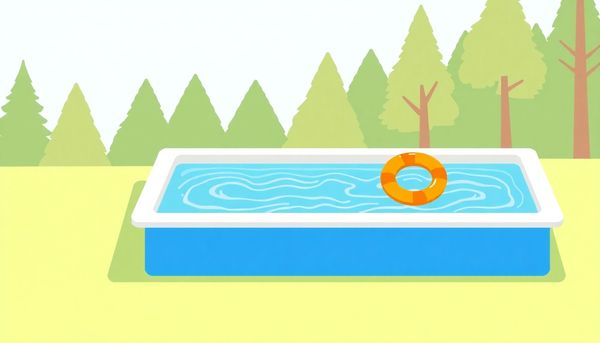
Testing the water in your above-ground pool isn’t just a chore—it's a ritual that ensures a summer of safe, splashing fun. You might recall the family barbecue last July when everything was perfect until a few itchy eyes had guests retreating from the pool. Avoid such hiccups by regularly monitoring your water chemistry, starting with the essentials like pH and chlorine levels. These parameters can swiftly change, influenced by swimmers, weather, and even sunlight.
Begin your testing journey by investing in either test strips or a liquid test kit. If deciphering strip colors feels like deciphering a secret code, a digital reader might make life easier. Effective testing starts with a good water sample. Picture yourself standing poolside, cup in hand. Submerge it elbow-deep, turn it upright, and voilà—you have your sample. Remember, accuracy is paramount, so avoid skimmers and return jets.
Next, dip a test strip in, pull it out, and wait for those colors to evolve. Compare them against the chart on the packaging. Your goal? Keep pH between 7.4 and 7.6 and ensure chlorine levels are optimal at around 3 ppm. Regular testing—at least weekly—is key, and more so during pool parties or after heavy rains. Each test protects your pool’s equipment, ensures swimmer comfort, and keeps the water invitingly clear. With practice and the right tools, maintaining your pool's health becomes second nature, leaving you more time to enjoy those sunny, carefree afternoons.
Testing and adjusting pH levels in an above ground pool is akin to tuning a musical instrument. A harmonious pH balance ensures that every component of your pool works in concert, providing a safe and enjoyable swimming environment. To begin this process, gather your tools: a reliable test kit and the necessary chemicals. Test strips offer a quick glimpse, but a liquid test kit provides a more precise reading, a bit like swapping a sketch for a detailed blueprint.
Start by collecting a water sample—an essential step. Dip a clean container elbow-deep into your pool, away from the skimmer and return jets, to capture an accurate representation of your water’s condition. Once you have your sample, follow the test kit’s instructions to measure the pH levels. Ideally, these should hover between 7.4 and 7.6, a sweet spot that keeps your pool’s ecosystem thriving.
If adjustments are needed, don’t rush. Gradually introduce pH increasers or decreasers, such as soda ash or muriatic acid, while your pool’s pump circulates the water. Patience is key; allow at least 20 minutes for the chemicals to integrate before retesting. This iterative process ensures that all swimmers can enjoy a clear, irritation-free swim, while also safeguarding your pool’s infrastructure. Keeping your pH balanced isn't just maintenance—it's an artful dance that, when done correctly, keeps your pool sparkling and serene.
Ensuring the safety of your family while maintaining a pristine pool starts with understanding how to balance pool chemicals properly. Think back to a time when you mixed up a batch of cookies — the right amount of each ingredient was crucial, right? The same principle applies when adding chemicals to your pool. Start by adding them one at a time, never mixing outside the water, as this can lead to dangerous reactions.
Begin with stabilizing the alkalinity; this sets the stage for adjusting the pH. Alkalinity acts like a buffer, preventing drastic pH shifts. If it's too low, baking soda can help. If too high, a pH decreaser or muriatic acid is your go-to. Once alkalinity is set, fine-tune your pH to fall between 7.4 and 7.6. This ensures swimmer comfort and optimal chlorine efficacy.
Chlorine is next. Whether in tablet, granule, or liquid form, it needs time to integrate, so check levels a few hours later. For those using dichlor or trichlor, the built-in cyanuric acid simplifies things by protecting chlorine from the sun. If using liquid chlorine, remember to add a stabilizer separately if your pool is exposed to sunlight.
Lastly, remember that patience is key. Allow each chemical to disperse fully before re-testing, and keep your pool pump running during the process. This thoughtful approach to pool maintenance not only ensures clear, clean water but also safeguards everyone who takes a dip.
Choosing the right testing kit for your above-ground pool is like selecting the perfect tool for a job—it makes all the difference in achieving success. With so much riding on accurate water balance, finding a reliable kit is essential. Test strips are a popular choice among pool owners due to their ease of use and affordability. They're great for regular maintenance, offering quick readings for pH, alkalinity, and chlorine. Though simple, not everyone finds the color-matching process precise, which can lead to uncertainty about the exact chemical levels.
For those who prefer a more accurate approach, liquid test kits are a worthy investment. These kits may require a bit more effort but provide detailed readings which can be crucial if your pool often faces fluctuating chemical levels. Recently, a friend of mine switched to a liquid test kit after struggling with persistent algae. The detailed results helped her pinpoint an imbalance she hadn't noticed before, saving her from further complications.
Lastly, digital testers offer an innovative solution, eliminating guesswork from color comparisons. While they come at a higher price point, their ease and precision can be invaluable for those committed to maintaining pristine pool conditions. Remember, your choice should align with your specific needs and comfort level—ensuring your pool remains a refreshing escape, not a chemical conundrum.

Adjusting the pH and chlorine levels in your above-ground pool can feel a bit like trying to balance on a tightrope. It's a delicate act, but once you get the hang of it, you'll be rewarded with crystal-clear water that’s both inviting and safe. pH and chlorine are the dynamic duo that keep your pool healthy, preventing issues like algae blooms, unpleasant odors, and equipment corrosion.
Begin by testing these levels at least weekly using a reliable test strip or liquid kit. Each pool has its unique demands, often influenced by weather changes or heavy usage. Mine once veered off track after a weekend pool party, leading to murky water and irritated eyes. The test strip revealed a high pH level and low chlorine. From experience, I've learned to tackle alkalinity first since it acts as a buffer for pH. If your alkalinity is off, start there and then adjust the pH. A pH increaser works wonders if the water is too acidic, while a pH decreaser or muriatic acid helps if it’s too basic.
Next, focus on chlorine levels. Tablets or granules are your best bet for maintaining a stable chlorine environment. Toss them into the skimmer or floater, and let them work their magic. If your pool is basking in the sun, cyanuric acid is essential to shield chlorine from UV rays. Remember, it’s all about patience and precision—add chemicals gradually and allow each one to circulate before swimming.
By keeping these levels in check, you'll ensure a refreshing swim every time. It's a small effort for a big reward: a sparkling, inviting pool that’s the envy of the neighborhood.
Testing the water in your above ground pool regularly can feel like a tedious chore, but the benefits far outweigh the effort. Consider it akin to tuning a musical instrument; ensuring every note plays perfectly requires regular checks. The health of your pool's water hinges on consistent monitoring of key elements like pH and chlorine, which are known to fluctuate frequently. Neglecting these levels can lead to murky water, algae blooms, and even damage to your pool's equipment over time.
Embracing a routine testing schedule is crucial. Once a week is the minimum, although more frequent checks are recommended during periods of heavy use, after significant rainfall, or following the addition of fresh chemicals. Using test strips or a liquid test kit, you can quickly measure vital components such as total chlorine, free chlorine, pH, alkalinity, and cyanuric acid. Each of these elements plays a distinct role in maintaining the harmony of your pool's water chemistry.
For accurate readings, avoid sampling water near the skimmer or return jets. Instead, take a sample from the middle of the pool, elbow-deep. Investing in a digital reader might be worthwhile if test strips leave you second-guessing. This simple step ensures that any adjustments made will be based on reliable data, keeping your pool crystal clear and ready for a refreshing dip any time. By committing to regular testing, you're not just maintaining a pool; you're creating a sanctuary for relaxation and fun.
Grasping the essence of pool maintenance begins with a crucial step: balancing pH levels. This simple yet vital task often determines the well-being of your pool and its users. When left unchecked, an imbalanced pH can transform your pool into a breeding ground for algae, trigger eye irritation among swimmers, and wreak havoc on pool equipment. Ever had that uncomfortable stinging sensation in your eyes after a swim? A likely culprit is pH imbalance.
Consider the pH scale as a measure of how acidic or basic your pool water is. Ideally, you want your pool's pH to hover between 7.4 and 7.6. These numbers might appear trivial, but they hold the key to maintaining a safe and pleasant swimming environment. Begin by testing the water using either liquid kits or easy-to-read test strips. A friend of mine swears by digital readers for precision, but whichever method you choose, consistency is key. Regular testing ensures that you catch fluctuations before they escalate into bigger problems.
When adjustments are necessary, a pH increaser such as soda ash can elevate low pH levels, while a pH decreaser or muriatic acid will lower them. It's a bit like baking; adding ingredients in the right order and quantity matters. By managing your pH first, you pave the way for more effective chlorine sanitation and a harmonious aquatic experience.
Getting the chlorine balance just right in your above-ground pool can feel like a science experiment gone wrong if you're not careful. Imagine hosting a pool party only to find the water has turned a lovely shade of green because the chlorine's gone rogue. To avoid such aquatic disasters, understanding how to adjust chlorine levels effectively is crucial.
Firstly, ensuring your chlorine is within the ideal range of 1 to 3 parts per million (ppm) helps maintain the water’s sanitization while keeping algae and bacteria at bay. Begin by testing your water using reliable test strips or a digital reader that measures free and total chlorine levels. If your free chlorine level is low, consider using chlorine tablets or granules. These forms dissolve slowly, providing a steady supply of chlorine, which is particularly useful during the summer months when the pool is most active.
For an immediate boost, liquid chlorine offers a quicker solution but requires more frequent additions. Once added, circulate the water for about an hour and retest to ensure it has reached the desired levels. Bear in mind, if your combined chlorine level (total chlorine minus free chlorine) surpasses 0.5 ppm, it’s time to shock the pool. This process involves adding a higher dose of chlorine to break down contaminants, restoring the water's clarity and scent.
Lastly, if you've got a saltwater pool, always keep an eye on the salt levels to ensure the generator works efficiently. By staying on top of these details, you'll ensure your pool is always a refreshing escape rather than a chemistry conundrum.
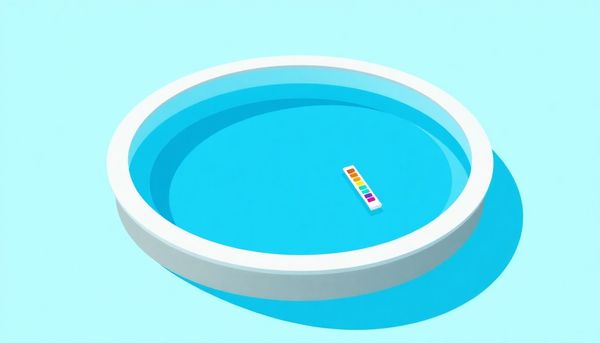
When it comes to keeping your above ground pool sparkling clean, accuracy is your best friend, and test strips are your go-to tool. Unlike the elaborate setup of a liquid test kit, these strips are straightforward and affordable, making them a staple for both new pool owners and seasoned pros alike. Imagine standing by the pool, test strip in hand, ready to dip it into the water. It’s a simple process, yet the insights it provides are vital.
Begin by collecting a water sample from the pool, ensuring it's taken from a spot away from the skimmer or return jets. This method prevents skewed readings from overly chlorinated water. Dip the strip into the water swiftly, then hold it still in the air for about 15 seconds. The anticipation builds as the colors develop, each hue a storyteller of your pool's chemistry.
Then, compare the strip to the guide on its packaging. Each color transition reveals essential information about your water's pH, chlorine levels, and more, acting as a silent guardian against imbalances that could lead to algae or equipment damage. Be sure to test at least weekly, or more frequently during periods of heavy use or rain. By making test strips a routine part of your pool care, you'll ensure consistently safe and enjoyable swimming conditions.
To ensure your pool water remains as clear as a summer sky, collecting an accurate water sample is your first step. This process might seem straightforward, but a well-collected sample can save you from future headaches. Begin by choosing the perfect spot—not too close to the skimmer or return jets, where water circulation might skew your readings. Grab a clean, clear cup, and hold it upside down as you plunge it elbow-deep into the pool. This depth ensures you’re sampling the water that reflects your pool's true chemistry, not the surface or edge variations. Once submerged, flip the cup right side up to capture your sample.
Accuracy is key, much like navigating with a compass; a slight deviation can lead you far from your destination. Immediately after collecting, test your water using test strips or a liquid test kit. Each method has its charm: strips offer quick results, while liquid kits provide precision for those who like a more hands-on approach. Dip the test strip or fill the testing cylinder without delay—time’s not your friend here, as exposure might alter the sample’s chemical balance.
While testing once a week is a good rule of thumb, consider extra checks after rainstorms, heavy pool use, or the addition of fresh water. These factors can swiftly alter your pool’s chemistry, turning a blissful swim into a chemical conundrum. By mastering the art of sampling, you set the stage for precise pool maintenance, ensuring every dive is into crystal-clear waters.
Selecting the ideal test strips for your pool is crucial for maintaining a healthy swimming environment. With numerous options available, it’s easy to feel overwhelmed. But consider this: your choice of test strips can significantly impact the accuracy of your water chemistry readings. One summer, I opted for a basic strip that only tested pH and chlorine, and it led to an algae bloom that could have been prevented with more comprehensive testing.
Start by assessing what you need to measure. Standard test strips often cover pH, chlorine, and alkalinity. For a more thorough analysis, consider strips that also measure total hardness, cyanuric acid, and other elements like copper and iron. This broader spectrum can provide insights into potential issues before they escalate—saving both time and money on pool maintenance.
It's also wise to choose strips compatible with a digital reader if you find color matching challenging. This tool can enhance precision, ensuring you adjust chemical levels accurately. Remember, test strips should be stored in a cool, dry place to maintain their efficacy, and check the expiration date before use—an often overlooked step that could lead to inaccurate readings.
Ultimately, the right test strips are those that fit both your pool’s needs and your personal comfort level with testing. Investing in quality strips is a small price to pay for crystal-clear water and peace of mind.
Grasping the art of analyzing and comparing your pool's chemical results is akin to unraveling a mystery. Each test strip tells a story, revealing the hidden state of your water. Once you’ve dipped the strip and compared it to the color guide, you’re left with a set of numbers that hold the key to a crystal-clear pool. These numbers are more than mere digits; they’re a glimpse into the health of your pool environment.
Begin by scrutinizing your results, focusing on the most volatile elements: pH and chlorine. These two often dance in delicate balance, dictating the comfort of swimmers and the efficiency of sanitizers. If your pH is wandering outside the ideal 7.4 to 7.6 range, it can either cause irritating acidity or ineffective chlorination. Similarly, a free chlorine level below 1 ppm may invite unwelcome algae blooms, while levels above 3 ppm could lead to eye irritation.
Next, compare your current results against previous readings. This will help you spot trends or recurring issues. Perhaps last week’s rain diluted the pool water, lowering chlorine levels, or maybe the summer sun is depleting your cyanuric acid, leaving chlorine vulnerable to UV rays. By recognizing patterns, you can preemptively adjust chemical doses, saving both headaches and money.
Understanding this data not only safeguards your pool but also transforms you from a casual pool owner into a knowledgeable guardian of aquatic serenity.
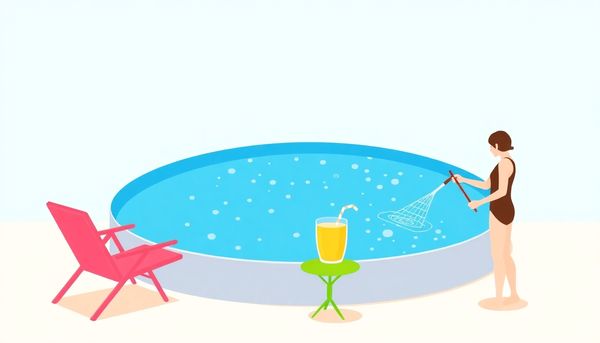
In the world of pool maintenance, overlooking the importance of proper chemical handling is a common pitfall. It’s not just about knowing which chemicals to add but also understanding the order and timing. For instance, I remember a friend whose pool turned cloudy overnight because they hastily added chemicals without allowing each one its time to disperse fully. This misstep not only wasted their efforts but also their resources.
One major mistake often made is the parallel use of different chemicals. Mixing them outside the pool can lead to hazardous reactions, much like a science experiment gone wrong. Instead, patience pays off. Add chemicals one at a time and allow at least 20 minutes for circulation. Doing so ensures each chemical performs its task without interference.
Additionally, many skip the crucial step of adjusting alkalinity before tackling pH levels. Alkalinity acts as a buffer, keeping pH levels stable. Ignoring this sequence can lead to a frustrating game of chemical catch-up. Think of it like setting a foundation before constructing a house. Get the base right, and everything else will follow with greater ease.
Lastly, never underestimate the sun’s impact. Cyanuric acid protects chlorine from being zapped by UV rays, ensuring longer-lasting effectiveness. Without it, you might find yourself constantly chasing stable chlorine levels. In the end, understanding these nuances can transform pool care from a chore into an art.
Balancing the pH and chlorine levels in your above-ground pool is like fine-tuning a musical instrument. Each component must harmonize perfectly to ensure your pool remains a sanctuary rather than a source of headaches. Start with the chemistry basics: pH levels should hover between 7.4 and 7.6, the sweet spot where water is neither too acidic nor too basic. This range keeps swimmers' skin happy and safeguards pool equipment from corrosion.
Now, let’s chat about chlorine—your pool's unsung hero. Free chlorine, ideally at 1 to 3 parts per million, acts as your frontline defense against bacteria and algae. However, too little, and your pool morphs into a biology experiment gone wrong; too much, and you're dealing with a bleach-like odor and irritated eyes. Regular testing ensures this delicate balance, maintaining a safe swimming environment.
I remember last summer, after a surprise family reunion in the backyard, my pool's pH and chlorine levels went haywire. A sudden influx of swimmers often does that. Swift action with a pH increaser and some chlorine shock saved the day, keeping the water crystal clear and inviting. The lesson? Consistent checks and timely adjustments prevent minor issues from spiraling into major disasters. So, arm yourself with the right chemicals and keep a vigilant eye on these vital levels. Your pool—and your summer fun—depends on it.
Navigating the waters of pool maintenance can feel daunting, but the right tools can turn a complex chore into a straightforward task. My friend once spent an entire afternoon squinting at test strips, convinced she was reading hieroglyphs rather than pH levels. It turns out, there’s a simpler way. Using digital readers alongside traditional test strips can bring clarity where colors blur. Digital readers eliminate guesswork, offering precise readings with just a click, perfect for those who find color comparison to be more art than science.
While test strips remain a budget-friendly staple for weekly checks, offering insights into basic parameters such as pH, alkalinity, and chlorine levels, they might not suit everyone. For those who prefer a more comprehensive approach, liquid test kits provide in-depth analysis and can measure factors like cyanuric acid and calcium hardness with heightened accuracy. Each method has its merits, but the key is consistency and ease.
When testing, precision in sampling is crucial. Scooping water elbow-deep from the pool ensures a true representation of your pool's chemistry, rather than a skewed sample from near the skimmer or return jets. Test weekly—or more often if your pool sees frequent use or heavy rainfall—to maintain balance. With these tools, managing your pool's health becomes a task you can handle with confidence, leaving more time to enjoy the sunlit reflections on your pristine waters.
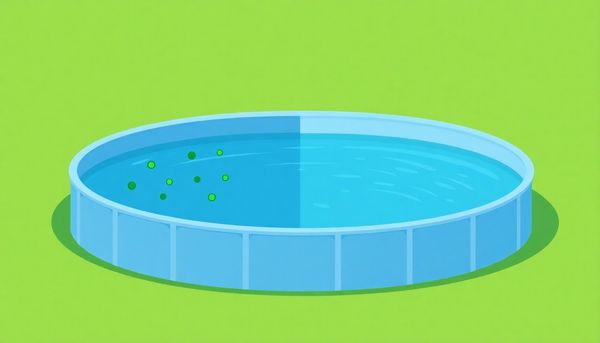
This article provided insights into maintaining your pool. Start your pool care journey today!
Want to become a pool maintenance expert? Our free Pool School course covers everything you need to know about pool care. From basic maintenance to advanced troubleshooting, you'll learn how to:
Join over 10,000 pool owners who have already transformed their pool care routine. Get started with our free Pool School course today!